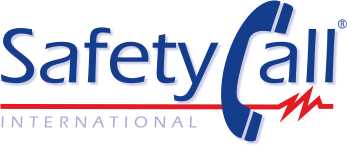Cosmetics
Your solution for meeting requirements of the Food, Drug and Cosmetic Act
The Modernization of Cosmetics Regulations Act of 2022
How We Can Help:
The Modernization of Cosmetics Regulations Act of 2022 (MoCRA) requires cosmetics companies to comply with a host of new regulations, including mandatory adverse event reporting for serious events. As recognized leaders in adverse event management and with nearly 20 years of experience providing FDA compliance reporting services, SafetyCall International is well equipped to provide cosmetic manufacturers assistance with their adverse event reporting obligations, from intake through assessment and report creation by a SafetyCall clinician applying reasonable medical judgment.
What We Know:
The new law is similar to the current dietary supplement and OTC drug mandatory adverse event reporting requirements but adds new definitions for SAERs associated with cosmetic products. Typical of other FDA serious adverse event (SAER) definitions, the new law defines a SAER as an event involving:
- Death
- Life-threatening experiences
- Inpatient hospitalizations
- Persistent or significant disability or incapacitations
- Congenital anomalies
- Medical or surgical procedures required to prevent potentially serious outcomes based on reasonable medical judgment,
- And birth defects
But goes further with additional definitions including:
- An infection
- Second- or third-degree burns
- Significant hair loss
- Or persistent or significant alteration of appearance
Consistent with supplement and OTC drug requirements, the new law will also require manufacturers to maintain these adverse event records for a period of six years. FDA inspectors must be allowed access to these records for compliance purposes during audits. Since passage of the bill, FDA has announced they will accept these reports to be submitted via MedWatch 3500A and is working on updating the Safety Reporting Portal (SRP) to accommodate electronic submissions of these reports.
What you can do:
Contact us today to explore how SafetyCall can help your organization!
____________________________________________________________________________________________________________________________________________________________________________
The Federal Food, Drug, and Cosmetic Act (FD&C Act)
The Federal Food, Drug, and Cosmetic Act (FD&C Act) defines cosmetics by their intended use, as “articles intended to be rubbed, poured, sprinkled, or sprayed on, introduced into, or otherwise applied to the human body…for cleansing, beautifying, promoting attractiveness, or altering the appearance” [FD&C Act, sec. 201(i)].
While there is no mandatory requirement to report adverse events involving cosmetics, there is an expectation that manufacturers and responsible persons have systems in place to effectively monitor the safety of their products. SafetyCall’s primary mission is to promote good product stewardship through our unmatched professional experience and expertise in adverse event surveillance. Our focus is on establishing a standardized system for documentation and assessment of adverse events involving cosmetics. SafeyCall’s approach allows for unbiased post-market surveillance which helps our clients identify expected or unexpected use patterns or conditions that may affect the safety of their product.
SafetyCall is closely monitoring the potential passage of the ‘FDA Cosmetic Safety & Modernization Act.’ This regulation may increase federal regulatory oversight for cosmetics and personal care products and require the reporting of Serious Adverse Events within 15 days. To learn more visit: https://www.congress.gov/bill/115th-congress/senate-bill/2003/text.
| Regulatory Agencies | Applicable Federal Laws |
|---|---|
| Food and Drug Administration (FDA) | FDA – Food, Drug and Cosmetic Act (FD&C Act, section 201(i) |
| Health Canada | Health Canada – Food and Drugs Act (C.R.C., c.869 Cosmetic Regulations) |
Highlights
Principles of a Best Practice Post-Market Surveillance System
- Ensure that pre-market assessments or beliefs of inherent safety are realized during consumer use of the product.
- Ensure known safety concerns have been identified and considered, as well as stated on product warning labels.
- Ensure the post-market surveillance system is sufficiently sensitive, such that potential threats or safety concerns would likely be included in the monitored events.
- Ensure the system is sufficiently specific to allow detection, differentiation and ultimately determination of real vs. perceived threats.
- Identify intended and unintended patterns of use which may potentially contribute to unintended effects.
- Allow assessment of product performance by itself or in the presence of other products or substances.
- Help ensure that effects in unique populations are considered when monitoring safety.
- Further define, document and confirm a relative safety profile for the product during real life conditions of use.
Your Industry Obligations
- All over-the counter (OTC) sunscreens are regulated as drugs with mandatory regulatory reporting requirements for Adverse Events.
- Causality is not a prerequisite for tracking and reporting adverse events associated with the use of regulated personal care products.
- Understand that consumers will most likely report adverse events directly to the manufacturer. This means that manufacturers need to implement additional processes for differentiating between those adverse effects which may represent a potential safety concern from those having nothing to do with the use of the product.
- Be aware of “background noise” involving adverse events not related to product use.

